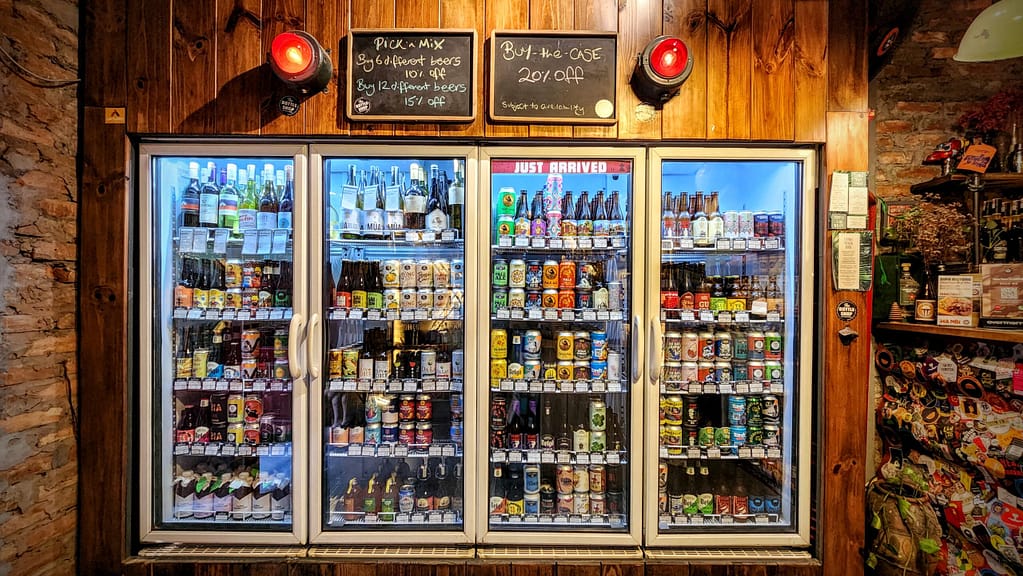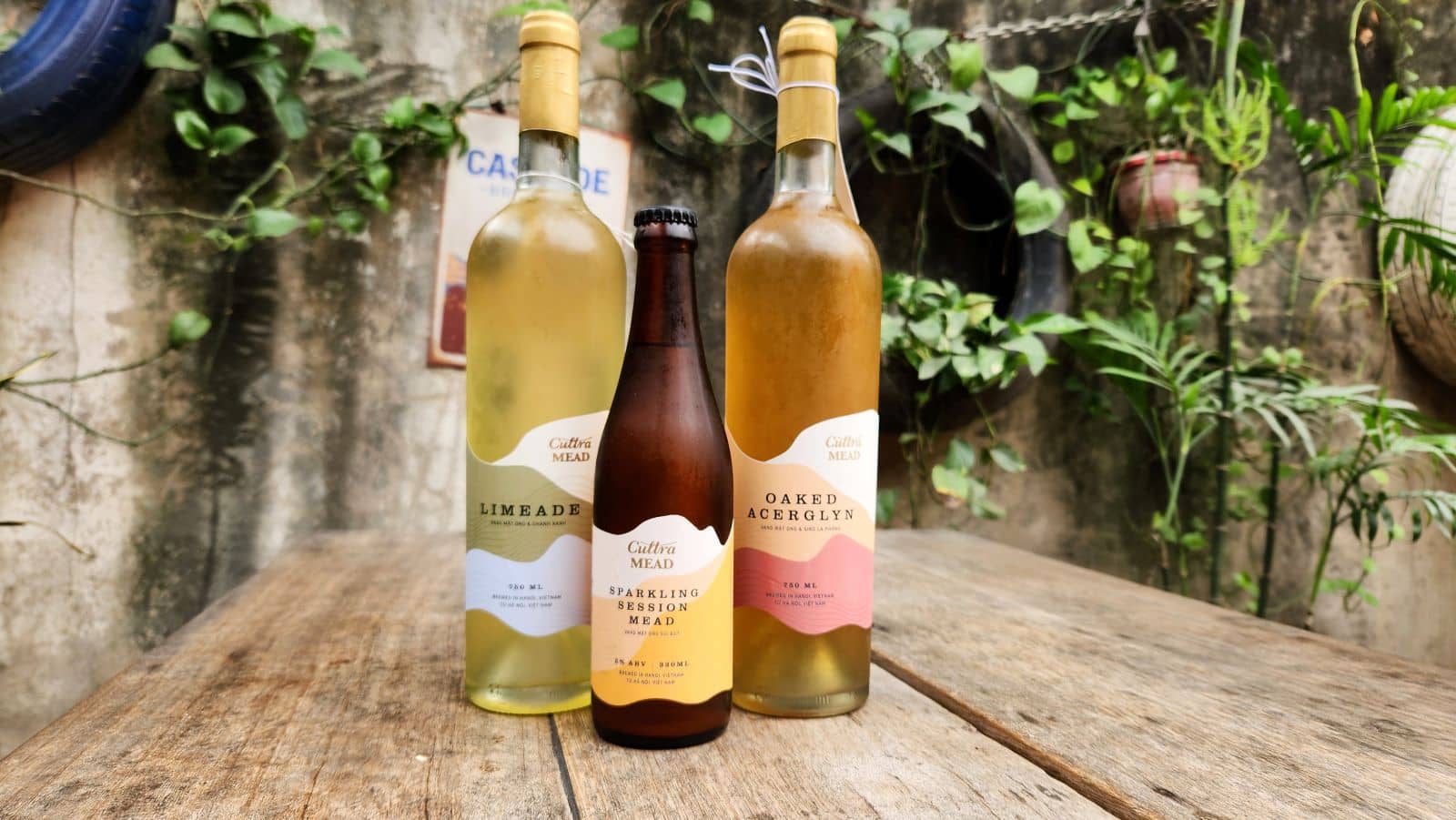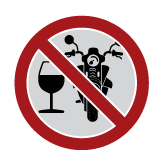
A Dummies Guide to Understanding Craft Beer Types

In the modern day world of craft beer there are literally hundreds of different beer styles and still further unique classifications continue to appear. It’s been a challenge but we have made our best efforts to restrict our classification of beer types to those listed below to help your understanding We hope you enjoy this brief introduction to beer types and our recommendations for the best brews to taste in Vietnam today!
Ale vs Lager
The first step to understanding craft beer is that all beer falls into two distinct styles – ales and lagers – completely borne from the use of a different yeast. In lagers, a relatively newer type of beer, the yeast (saccharomyces pastorianus) gathers at the bottom of the tank during fermentation, a process which takes place at lower temperatures and over a longer period of time. As a result lagers are usually crisp, clean and refreshing. With ales, the yeast (saccharomyces cerevisiae) gathers toward the top and ales age for just a few weeks at a relatively higher temperature, making these beers aromatic and often fruity. It is the fermentation process which turns what would otherwise be a barley and malt tea into a boozy beverage.Now, let’s break things down a little further, bearing in mind we have grouped some beer types together and left out others completely in an attempt to smooth your journey into the world of craft.
LAGER
Lagers have very little hop or malt presence, making them light, crisp and clean, a highly-drinkable showcase of malts and hops uninterrupted by the flavour of yeast esters. They’re almost always an attractive straw or gold-colour, with an ABV 5% or below, and make an excellent launchpad for newcomers to the world of beer in general.
Our Choice: Origins Crispy Bưởi Pomelo Rice Lager; Magic Barrel Di Sản Heritage Lager
PILSNER
Named after the city of Plzen in the Czech Republic, Pilsner is an easy-drinking, highly carbonated sub-species of lager that gets its slight spicy note from hops. Pilsners are among the hoppiest lagers and generally have a dry, slightly bitter flavour. Unlike other straw-coloured lagers, Pilsners offer more residual malty sweetness and boast more hop character and bitterness. Pilsners offer craft beer lovers a distinct departure from more robustly flavoured and heavier styles.
Our Choice: East West Pacific Pilsner
CREAM ALE
Cream Ales are hybrid beers, a legacy of the pre-Prohibition era when American brewmasters brewed a light lager as if it were an ale, either using ale yeast and finishing with lager yeast (or mixed together with a lager beer), producing pale golden-coloured ales with the creamy texture from which these beers took their name. As a result there’s incredible leeway within this style, resulting in extremes of low-alcohol, sweet versions and also high-ABV imperial cream ales with a pronounced hop bitterness.
Our Choice: Labtory Mộc Hương Cream Ale
BLONDE (or GOLDEN) ALE
One of the most approachable craft beer styles and the first stepping-stone for many dipping their tongue in craft beer for the first time. A blonde (or golden) ale is an easy-drinking beer thanks to its light malt sweetness and trace of hops which add gentle aroma. As the name suggests they have a visually appealing pale colour and a clear body. Rounded and smooth, with no particularly dominating malt or hop characteristics, this is an American classic known for its simplicity. These beers can have honey, spices and fruit added, and may be fermented with lager or ale yeast.
Our Choice: Mekong Bengal Ambush Blonde; Fuzzy Logic Celestial Blonde; Rooster Blonde
SAISON
Originally brewed by Belgian farmers during winter to provide hydration and liquid libations to refresh farmhands during the labours of a busy summer’s day, Saison (“season” in French”) is recently experiencing a resurgence as modern-day craft beer drinkers seek to revisit tradition and experience a flavour from an older, simpler time.
As tanks of compressed CO2 were not quite commonplace on rural 18th century farms, Saisons tend to be bottle-conditioned, which means yeast is added to the bottle to naturally carbonate the beer, making them extra yeasty-flavoured and imparting a hazy character. Many Saisons are light and crisp, fruity and spicy, with hop forward bitterness and often pretty funky flavours. With its lower IBU, Saison pairs wonderfully with spicy food, refreshing the palate while providing a more robust counterpoint than a more quenching beer style like a Pilsner.
Our Choice: Overmorrow Sơn Sette; Thơm Tây Bắc Saison; Mekong Bumble Basil Saison
WHEAT BEER
Using wheat for the malt ingredient gives the beers a light colour and alcohol level that makes it perfect for kicking back with during the summer. An easy-drinking, light style of beer, wheat beers are known for a soft, smooth flavour and a hazy body. Top-fermented wheat beers are bright, fruity and aromatic, presenting flavours of banana, clove, and citrus fruit thanks to the presence of lots of yeast esters.
Our Choice: Hoprizon Full Sail White Ale; Tê Tê White Ale; 7 Bridges Sunset Tangerine Wheat
WITBIER
Belgium’s version of wheat beer is often brewed with oats to give the beer a darker pale colour and a cloudy appearance. The yeast used also gives the beer a spicy flavour, and additional spices like coriander and orange peel are often added to boost the fruity characteristic. Traditional Witbiers have low alcohol by volume, although they can go as high as 7%.
Our Choice: Belgo Witbier
HEFEWEIZEN
Traditionally, German Hefeweizens are made with 50% barley and 50% wheat, although they may contain an even higher proportion of wheat. This gives them a light colour, an almost chewy texture and a cloudy appearance. The ale yeast used for these beers has a banana-like flavour, and many Hefeweizens also contain clove-spice flavours.
Our Choice: East West Summer Hefeweizen
PALE ALE
A beer style brewed with predominantly pale malts to produce a brew that balances malt and hop flavours, unlike the more hop-forward IPA style, Pale Ales range from dark gold to amber. English Pale Ales are known for their copper colour and fruity scent, whilst American Pale Ales, with more hop presence, are somewhat of a hybrid between the traditional English version and the modern IPA style.
Our Choice: East West Pale Ale; MixTape California Sun Juicy Pale; Fuzzy Logic Pale Ale
IPA (India Pale Ale)
Originally, IPA was a British Pale Ale brewed with extra hops. High levels of this bittering agent made the beer stable enough to survive the long boat trip to India during colonial times without spoiling. The extra dose of hops gives IPA beers their bitter taste. Depending on the style of hops used, IPAs may have fruit-forward citrus flavours or taste of resin and pine.
American, or West Coast, IPAs have resurrected this classic style, taking hop presence to a totally different level, and in the process turning a historical relic into the backbone of the craft beer movement. Instead of using hops as a preservative, breweries use hops to add extreme levels of bitterness as well as floral, fruity, citrus and pine flavours.
Our Choice: Đê Mê Ba Hoa IPA; Heart of Darkness Kurtz Insane IPA; Mekong Brewing Blue Elephant IPA; Fuzzy Logic Thunderslap IPA
SESSION IPA (SIPA)
A “sessionable” interpretation of the classic American IPA, the SIPA is lower in terms of ABV yet still dominated by hop-forward flavours such as citrus, tropical fruit and pine. Lighter in terms of body and mouthfeel, and typically under 5% ABV, SIPAs are a highly-drinkable alternative to more potent craft beers.
Our Choice: 7Bridges Dragon IPA; Đê Mê Hơi Hơi Session IPA; Belgo Session IPA
DOUBLE (or IMPERIAL) IPA (DIPA)
DIPAs are aggressively hopped resulting in high ABV beers. With robust malt profiles and extreme amounts of hops, expect a full-bodied beer with flavours that almost leap out the glass and punch you in the face.
Our Choice: Origins Da Kao DIPA; 7 Bridges Imperial IPA; Overmorrow Quan Tâm Leap DIPA; Mekong Brewing Albino Rhino DIPA
BRUT IPA
A relative newcomer to the craft beer scene, Brut IPAs appeared in California in 2017. These beers are lighter in colour than regular IPAs, and they have a bubbly, dry mouthfeel like champagne.
Our Choice: Overmorrow Hồ Ly Water Brut IPA
NEW ENGLAND (or HAZY) IPA (NEIPA)
Also known as “Hazy IPA” or “Juicy IPA” this relatively new beer style originates from New England on the east coast of the US. These beers are full of hops, but they’re added at the end of the brew (as opposed to in the boil), giving the beer a huge burst of hop aroma and flavour without any extra bitterness. An unfiltered beer, many brewers also add oats or wheat to the grain bill to make the beers more hazy. A NEIPA has intense fruit flavours and aromas, a soft body, smooth mouth feel, virtually no boozy burn, and of course the cloudy or hazy appearance. Unlike a traditional IPA, NEIPAs lack the bitterness, and are much easier to drink. Some may even be brewed with lactose and fruit purée to create a “milkshake” taste.
Our Choice: Heart of Darkness Loose Rivet; Hoptimist Mango Hazy IPA; MixTape Peaches & Cream
RED (or AMBER) ALE
Originating from Europe, Red Ale unsurprisingly refers to styles of beer that are dark red or reddish in appearance, the beer colouring dependent on the selection of the malts used in the brewing process. Historically, Red Ales use specialty roasted malts that give it a sweeter, caramelized, or toasty flavour, whilst allowing it to achieve the reddish colour. Their decent level of hops gives them a balanced flavour, distinguishing them from darker-coloured beers where malt presence overwhelms the palate. Expect citrus, spice and herbal notes thanks to the introduction of British and US hops, all layered atop a pleasantly sweet malt base. To all intents and purposes Red Ales can be regarded as a relative of their (usually less hoppier) trans-Atlantic Amber Ale cousins; however Amber Ales also enjoy a close relationship with (admittedly less maltier) Pale Ale.
Our Choice: Belgo Amber Ale; Ten Dogs Elvis Imperial Red Ale
BROWN ALE
Offer a flavourful middle ground between hop-forward ales and malt-forward darker beers. The roasted malts used in the mash give the beer a full body, and they tend to be almost nutty in flavour. They can be a bit of a mixed bag, since the different malts used and the country of origin can greatly affect the flavour and scent of this underrated beer style. Most English-style browns are low alcohol and have no hop presence, but more modern American versions can range up to 8% and have a slight bitterness from the hops.
Our Choice: Steersman Dark Horse
DARK LAGER/DUNKEL
Dark in colour, these beers are smooth and easy drinking thanks to the lager yeast they’re brewed with. They have almost no hop presence, but the toasted and caramel flavours of dark malts to shine through. A perfect pairing for grilled meats and veg as they offer a straightforward complement to the roasty elements of grilled foods.
Our Choice: Rooster Dark
BELGIAN TRIPEL
Don’t be fooled by the bright yellow colour of tripel beers. They use three times the malt of Trappist table beers, making them as high as 12% ABV. They have a bitter presence to balance out the super sweet, dense, creamy flavour of the malts, but they also finish fruity. Many brewers add Belgian candi sugar to add alcohol to the brew, which can make these beers quite sweet.
Our Choice: Labtory Belgian Strong Ale; East West Modern Belgian Dark; Belgo Royale
QUADRUPEL
These Belgian Trappist beers don’t mess around: They can be as high as 14% alcohol! They have a bolder flavour, darker colour, and fuller body than tripels and dubbels, but they’re also full of phenols that make them spicy. Because they have such a high alcohol content, they cellar quite well.
Our Choice: 7 Bridges Infinite Prosperity
SCOTTISH ALE (or WEE HEAVY)
Scotch ales are sweet, spicy and smoky. Hops do not play a major role in this style. They’re similar to barley wines in their malt-forward character, but heavier and more caramel-forward with a soft and chewy mouthfeel.
Our Choice: Overmorrow Leann on Miá
PORTER
The Porter began its illustrious life in late 18th Century London as a popular tipple for street and river porters – hence the title! In general, they’re dark black in colour with low levels of hop bitterness and a roasted malt aroma. Porters may be fruity or dry in flavour, which is determined by the variety of roasted malt used in the brewing process. Expect robust and warming flavours of chocolate, coffee and dark berries.
Our Choice: East West Coffee Vanilla Porter; Labtory 1817 English Porter
STOUT
Like Porters, Stouts are dark in colour but finish dryer and roastier, thanks to the use of roasted barley in the mash. They can have coffee and chocolatey flavours, or they can remain unflavoured to accentuate the bitterness of the roasted grains. Stouts taste less sweet than Porters and often feature a bitter coffee taste, which comes from unmalted roasted barley that is added to the wort. They are characterized by a thick, creamy head.
Our Choice: Bross Eclipse Chocolate Stout; MixTape Molly Stout
IMPERIAL STOUT
Stouts with skyscraper ABVs as much as 12% mark. Like most stouts, they are black in colour and typically have a rich malty flavour and aroma with a full, sweet malt character. Bitterness may come from roasted malts of hop additions.
Our Choice: East West Independence Stout; Pasteur Street Cyclo Stout; Heart of Darkness Eloquent Phantom
SOUR BEER
An ancient style of beer that’s exploded in popularity in recent years. “Sour beer”, in which the introduction of a wild yeast or inoculation with bacteria adds acidic, tart flavours, can actually describe a number of craft beer varieties. If the beer is soured in stainless steel instead of wooden barrels, it’s usually called a kettle sour. These beers are known for a tart tang that pairs well with tropical fruit and spices. Sours may be blended with fruits like cherry, raspberry or peach, to add a balance of sweetness, thus marrying sweet and sour to make beer flavours completely unlike the lagers and IPAs of yore.
Our Choice: Overmorrow Hà Nội Weisse Sour
BARREL-AGED BEER
Barrel-aged beer refers to any beer, be it traditional or experimental, that is aged in a wooden barrel or in contact with wood (some brewers prefer to use wood chips or spirals instead of whole barrels). The beer is aged with the intention of imparting the unique character of the wood and the flavour of whatever was previously stored in the barrel. A variety of different woods may be used including oak, apple, and hickory, whilst the interior of the barrels may be charred or toasted to further enhance the flavours.
Our Choice: Heart of Darkness The Ghost Barrel-aged Stout; Furbrew Emperor Barrel-aged Sour
BARLEY WINE
First things first, this rich, boozy and complex brew is a beer, not a wine! They can be sweet and fruity, often with flavours of toffee, caramel and dried fruit, but are always very strong (around 8-15% ABV). To get the alcohol so high, brewers use a lot of malts, giving the beer a thick texture and a dark colour. Many barley wines are barrel-aged to temper the intense flavours, and they are one of the few beer styles that may benefit from cellaring to soften the flavours and ramp up the experience.
GOSE
According to the German Beer Institute, Gose is a 1,000-year-old beer style that originated in Saxony, Germany, near the Gose River and town of Goslar. Pronounced “go-zah” this beer is brewed with salt, resulting in a notable savoury character. You may not be able to actually taste the salt, but it’s definitely there, bringing all the other flavours together. Technically, this beer is a sour beer, but it’s usually not tart. Instead, it’s light and crisp, and it blends well with fruits. As a light bodied ale, the Gose ABV is typically under 4%, which makes it eminently sessionable and enjoyable on a hot summer days, however the odd flavour may become a little challenging for some drinkers after one or two. Expect to see a plethora of Gose styles evolve in the near future as American brewmasters have begun to experiment with this new/old style.
Our Choice: Magic Barrel Margarita Gose
CIDER
First things first, cider is certainly not an “apple beer”, nor is it even a beer! Cider is an alcoholic beverage made from fermented fruit juice, traditionally apples but craft culture has turned that assumption on its head and now there are ciders made from a whole plethora of different fruits, although pears used in this fashion produce a beverage better-known as a perry. Cider is without doubt one of the very earliest forms of booze that we can trace.
Our Choice: Slav Original Apple Cider; Bazan Hibiscus Cider; Saigon Cider Chili & Apple; Hanoi Cider Hopped Cider
KOMBUCHA
Kombucha is a sweetened black or green tea drink fermented with the help of a “scoby” (an acronym for “Symbiotic Culture Of Bacteria and Yeast) commonly consumed for its purported health benefits (full of probiotics) and presently experiencing a huge growth in popularity (particularly with younger generations).
The scoby eats most of the sugar in the tea, transforming the tea into a refreshingly fizzy, tart, and just shy of sweet, fermented beverage that is relatively low in calories and sugar. Depending on the added flavours kombuchas can boast more floral, herbal or fruity notes. Commonly regarded as “alcohol free” most kombuchas may generally contain up to around 1% ABV, the alcohol being a by-product of the fermentation process.
Our Choice: Cultra Kombucha Rosemary Sage Mint
HARD SODA
Hard sodas are alcoholic beverages manufactured in the style of a soft drink. A relatively new category in the craft beer industry, hard sodas (and hard seltzers) have only just started to appear in the Vietnamese beverage market. Typically with an alcohol content ranging from 4-8% ABV in most cases the alcohol can hardly be noticed, if at all, in the taste.
Our Choice: Wildside Lemongrass Lemon Hard Soda; Steersman Pink Guava Hard Soda
HARD SELTZER
“Seltzer” is just another name for soda water, plain water carbonated with CO2. Hard Seltzers (a.k.a. Spiked Seltzers) essentially combine alcohol with fruit flavouring and sparkling water, producing a light, easy-to-drink beverage low in carbohydrates, sugar, and calories, thus perceived as a healthier option, particularly in contrast to the high calorie indulgence factor presented by hard soda. Legally classified as a flavoured malt beverage, which in itself falls within the broader beer category, hard seltzers have found themselves part of the craft beer revolution. However in most respects they exist as a category of their own.
Our Choice: JUHO Peach Hard Seltzer; MixTape ParTea Hard Seltzer
We could ramble on forever but that should suffice for now. Thanks for sticking with us, hope you enjoyed it.
You must now be ready for a beer ?







